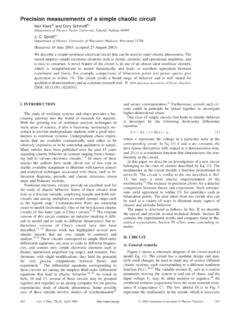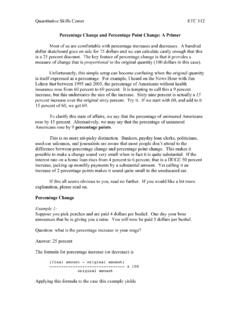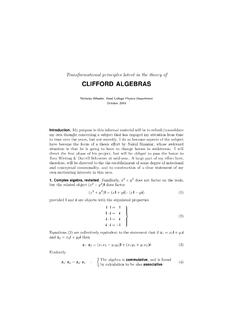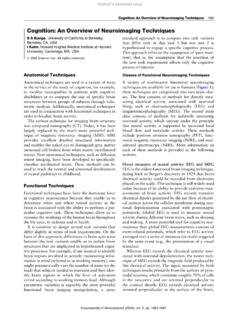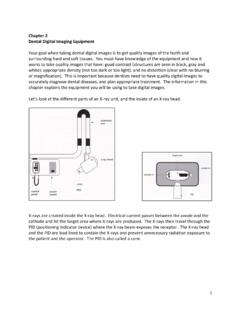Transcription of Hormones and Behavior: Basic Concepts
1 Hormones and Behavior: Basic ConceptsR. J. Nelson,Ohio State University, Columbus, OH, USA 2010 Elsevier Ltd. All rights endocrinology is the scientific study of theinteraction between Hormones and behavior. This interac-tion is bidirectional: Hormones can affect behavior, andbehavior can feedback to influence hormone concentra-tions. Hormones are chemical messengers released fromendocrine glands that influence the nervous system toregulate the physiology and behavior of individuals. Overevolutionary time, Hormones regulating physiological pro-cesses have been co-opted to influence behaviors linked tothese processes. For example, Hormones associated withgamete maturation such as estrogens are now broadlyassociated with the regulation of female sexual dual hormonal actions ensure that mating behavioroccurs when animals have mature gametes available forfertilization.
2 Generally speaking, Hormones change geneexpression or cellular function, and affect behavior byincreasing the likelihood that specific behaviors occur inthe presence of precise stimuli. Hormones achieve this byaffecting individuals sensory systems, central integrators,and/or peripherial effectors. To gain a full understandingof hormone behavior interactions, it is important to moni-tor hormone values, as well as receptor interactions in thebrain. Because certain chemicals in the environment canmimic natural Hormones , these chemicals can have pro-found effects on the behavior of humans and other Endocrinology TechniquesA number of methods are used to gather the evidenceneeded to establish hormone behavior of the recent progress in behavioral endocrinologyhas resulted from technical advances in the tools that allowus to detect, measure, and probe the functions of hormonesand their receptors .
3 These techniques, with a brief descrip-tion, are listed inTable 1. Several of these techniques aretheresultofadvancedresearchinbehavior alendocrinology,including the time-honored ablation-replacement techni-ques, bioassays, as well as modern assays that utilize theconcept of competitive binding of antibodies that includeradioimmunoassay (RIA), enzyme-linked immunosorbentassay (ELISA; enzyme-linked immunoassay (EIA)), autora-diography, and immunocytochemistry. Other techniquescommonly used in behavioral endocrinology include neuralstimulation and single-unit recording, techniques that acti-vate or block hormone receptors with drugs, and genearrays and genetic manipulations including interferingwith RNA and use of viral gene vectors to deliver novelgenes directly into the brain.
4 Because Hormones must inter-act with specific receptors to evoke a response, many ofthese techniques are used to influence or measure hormonesecretion, hormone binding, or the physiological and behav-ioral effects that ensue after Hormones bind to their respec-tive are organic chemical messengers producedand released by specialized glands called endocrineglands. Endocrineis derived from the Greek root wordsendon, meaning within, andkrinein, meaning to release, whereas the termhormoneis based on the Greek wordhormon, meaning to excite. Hormones are released fromthese glands into the bloodstream (or the tissue fluidsystem in invertebrates), where they act on target organs(or tissues) generally at some distance from their coordinate the physiology and behavior of ananimal by regulating, integrating, and controlling its bodilyfunction.
5 Hormones are similar in function to other chemi-cal mediators including neurotransmitters and , the division of chemical mediators into categoriesmainly reflects the need by researchers to organize biologicalsystems into endocrine, nervous, and immune systems, ratherthan real functional differences among these chemical sig-nals. Hormones often function locally as neurotransmittersand also interact with neurotransmitters and cytokines toinfluence can be grouped into four classes: (1) peptidesor proteins, (2) steroids, (3) monoamines, and (4) lipid-based Hormones . Generally, only one class of hormone isproduced by a single endocrine gland, but there are somenotable exceptions. It is important and useful to discrimi-nate among the four types of Hormones because they differin several important characteristics, including their modeof release, how they move through the blood, the locationof their target tissue receptors , and the manner by whichthe interaction of the hormone with its receptor results in abiological response.
6 The major vertebrate Hormones andtheir primary biological actions are listed inTable exceptions always exist, the endocrine sys-tem has several general features: (1) endocrine glands areductless, (2) endocrine glands have a rich blood supply,(3) Hormones , the products of endocrine glands, are97 Table 1 Common techniques in behavioral endocrinologyAblation(removal or extirpation) of the suspected source of a hormone to determine its function is a classic technique in brain regions that may regulate the behavior in question can also be ablated. Typically, four steps are required: (1) a glandthat is suspected to be the source of a hormone affecting a behavior is surgically removed; (2) the effects of removal are observed;(3) the hormone is replaced, by reimplanting the removed gland, by injecting a homogenate or extract from the gland, or by injecting apurified hormone; and (4) a determination is made whether the observed consequences of ablation have been reversed by thereplacement (RIA)is based on the principle of competitive binding of an antibody to its antigen.
7 An antibody produced inresponse to any antigen, in this case a hormone, has a binding site that is specific for that antigen. Antigen molecules can be labeled with radioactivity, and an antibody cannot discriminate between an antigen that has been radiolabeled (or hot ) and a normal,nonradioactive ( cold ) antigen. A standard curve is produced with several tubes, each containing the same measured amount ofantibody, the same measured amount of radiolabeled hormone, and different amounts of cold purified hormone of knownconcentrations. The radiolabeled hormone and unlabeled hormone compete for binding sites on the antibody, so the more coldhormone that is present in the tube, the less hot hormone will bind to the antibody. The quantity of bound hormone can be determinedby precipitating the antibody and measuring the associated radioactivity resulting from the radiolabeled hormone that remains unknown concentration of hormone in a sample can then be determined by subjecting it to the same procedure and comparingthe results with the standard (EIA), as RIA, works on the principle of competitive binding of an antibody to its antigen.
8 EIAs do not requireradioactive tags; instead, the antibody is tagged with a compound that changes optical density (color) in response to binding withantigen. Other than home pregnancy tests, most EIAs are developed to provide quantitative information. A standard curve isgenerated so that different known amounts of the hormone in question provide a gradient of color that can be read on a unknown sample is then added, and the amount of hormone is interpolated by the standard curves. A similar technique is called enzyme-linked immunosorbent assay (ELISA).Immunocytochemistry (ICC)techniques use antibodies to determine the location of a hormone in cells. Antibodies linked to markermolecules, such as those of a fluorescent dye, are usually introduced into dissected tissue from an animal, where they bind with thehormone or neurotransmitter of interest.
9 For example, if a thin slice of brain tissue is immersed in a solution of antibodies to a proteinhormone linked to a fluorescent dye, and the tissue is then examined under a fluorescent microscope, concentrated spots offluorescence will appear, indicating where the hormone is typically used to determine hormonal uptake and indicate receptor locations. Radiolabeled hormone is injected intoan individual or into dissected tissue. Suspected target tissues are sliced into several very thin sections; adjacent sections are thensubjected to different treatments. One section of the suspected target tissue is stained in the usual way to highlight various cellularstructures. The next section is placed in contact with photographic film or emulsion for some period of time, and the emission ofradiation from the radiolabeled hormone develops an image on the film.
10 The areas of high radioactivity on the film can then becompared with the stained section to determine how the areas of highest hormone concentration correlate with cellular technique has been very useful in determining the sites of hormone action in nervous tissue, and consequently has increased ourunderstanding of hormone behavior testsuse electrophoresis to determine in which cells specific DNA, RNA, or proteins are located. Homogenized tissue of interest isplaced on a nitrocellulose filter, which is subjected to electrophoresis that involves application of an electric current through a matrixor gel that results in a gradient of molecules separating out along the current on the basis of size (smaller molecules move farther thanlarger molecules during a set time period).


